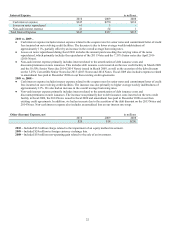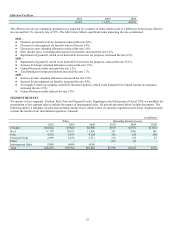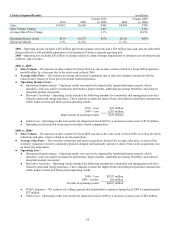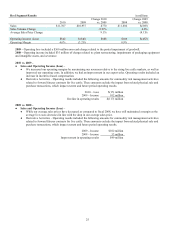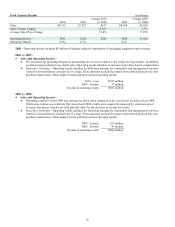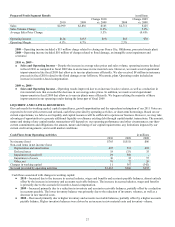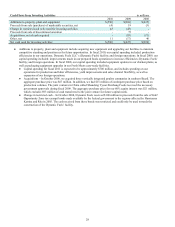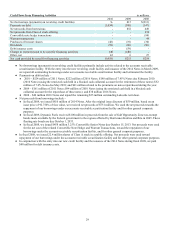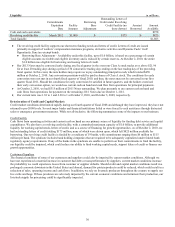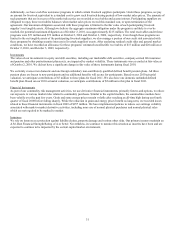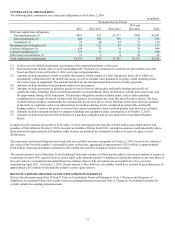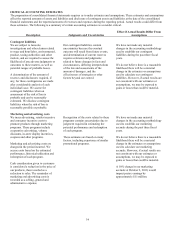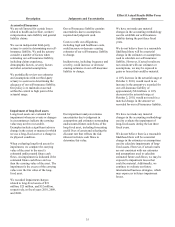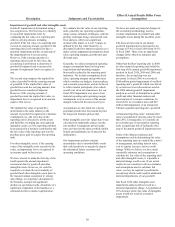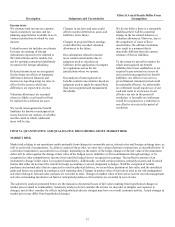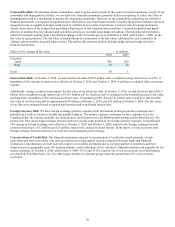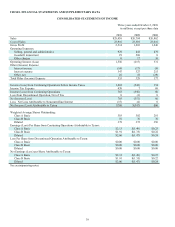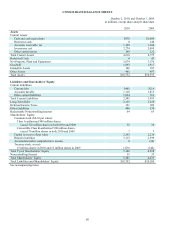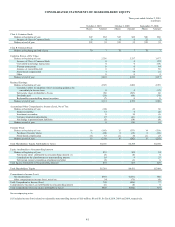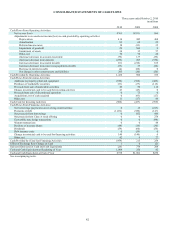Tyson Foods 2010 Annual Report Download - page 32
Download and view the complete annual report
Please find page 32 of the 2010 Tyson Foods annual report below. You can navigate through the pages in the report by either clicking on the pages listed below, or by using the keyword search tool below to find specific information within the annual report.
32
Credit Ratings
2016 Notes
On September 4, 2008, Standard & Poor’s (S&P) downgraded the credit rating from “BBB-” to “BB.” This downgrade increased the
interest rate on the 2016 Notes from 6.85% to 7.35%, effective beginning with the six-month interest payment due October 1, 2008.
On November 13, 2008, Moody’s Investors Services, Inc. (Moody’s) downgraded the credit rating from “Ba1” to “Ba3.” This
downgrade increased the interest rate on the 2016 Notes from 7.35% to 7.85%, effective beginning with the six-month interest
payment due April 1, 2009.
On August 19, 2010, S&P upgraded the credit rating from “BB” to “BB+.” On September 2, 2010, Moody’s upgraded the credit rating
from “Ba3” to “Ba2.” These upgrades decreased the interest rate on the 2016 Notes from 7.85% to 7.35%, effective beginning with
the six-month interest payment due October 1, 2010.
A further one-notch upgrade by either ratings agency would decrease the interest rates on the 2016 Notes by 0.25%, while a one-notch
downgrade by either ratings agency would increase the interest rates on the 2016 Notes by 0.25%.
Revolving Credit Facility
S&P’s corporate credit rating for Tyson Foods, Inc. is “BB+.” Moody’s corporate credit rating for Tyson Foods, Inc. is “Ba2.” If
Moody’s were to upgrade our credit rating to “Ba1” or higher, while our S&P credit rating remained at “BB+” or higher, our letter of
credit fees would decrease by 0.25%.
If S&P were to downgrade our corporate credit rating to “B+” or lower or Moody’s were to downgrade our corporate credit rating to
“B1” or lower, our letter of credit fees would increase by an additional 0.25%.
Debt Covenants
Our revolving credit facility contains affirmative and negative covenants that, among other things, may limit or restrict our ability to:
create liens and encumbrances; incur debt; merge, dissolve, liquidate or consolidate; make acquisitions and investments; dispose of or
transfer assets; pay dividends or make other payments in respect of our capital stock; amend material documents; change the nature of
our business; make certain payments of debt; engage in certain transactions with affiliates; and enter into sale/leaseback or hedging
transactions, in each case, subject to certain qualifications and exceptions. If availability under this facility is less than the greater of
15% of the commitments and $150 million, we will be required to maintain a minimum fixed charge coverage ratio.
Our 2014 Notes also contain affirmative and negative covenants that, among other things, may limit or restrict our ability to: incur
additional debt and issue preferred stock; make certain investments and restricted payments; create liens; create restrictions on
distributions from subsidiaries; engage in specified sales of assets and subsidiary stock; enter into transactions with affiliates; enter
new lines of business; engage in consolidation, mergers and acquisitions; and engage in certain sale/leaseback transactions.
We were in compliance with all covenants at October 2, 2010.
OFF-BALANCE SHEET ARRANGEMENTS
We do not have any off-balance sheet arrangements material to our financial position or results of operations. The off-balance sheet
arrangements we have are guarantees of debt of outside third parties, including a lease and grower loans, and residual value guarantees
covering certain operating leases for various types of equipment. See Note 10: Commitments of the Notes to Consolidated Financial
Statements for further discussion.


